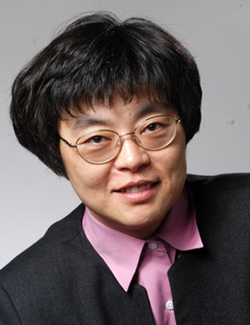Facilitating academic–industry ties has been a long-standing mission of The Optical Society.
Sometimes, a chance encounter has unexpected long-term impacts. Such a fortunate event happened early in my own experience when, as a grad student presenting at a poster session, I met OSA Fellow Don Scifres. Don had just emerged from leading a successful program at Xerox’s Palo Alto Research Center (PARC) and had co-founded a startup company, Spectra Diode Labs (SDL), a joint venture between Xerox and Spectra Physics. After the poster session, I approached Don and asked for a summer position. Not only did I get the job, but eventually Don agreed to co-advise me on my graduate thesis, and I spent a most rewarding two and a half years at SDL learning from masters of diode lasers including Don, Bill Streifer and many others.
Looking back, that experience helped launch an extremely satisfying career for me in optics. And while my own journey ended up along a more academic route, I have never forgotten the excitement of working in a startup, making real products that will end up in the hands of real customers.
My SDL experience also underscored, for me, the importance of collaboration and outreach between the academic and industry communities, to ensure that scientific discoveries can have lasting impact. Academic labs often focus on order-of-magnitude differences while compromising on manufacturability. But in industry, much smaller improvements in a device or technique with high reliability and yield can be the margin that leads to an actual product that thrives in the market. Such insights only emerge when academic and industry labs actively communicate and work together.
Facilitating these ties has been a long-standing mission of The Optical Society—which was, after all, founded in 1916 by an industrial scientist. As with so much else, COVID-19 has hindered the in-person encounters so to essential to forging such links. Yet OSA has continued to push this part of its mission forward along innovative paths.
OSA’s division dedicated to serving industry members, OSA Industry Development Associates (OIDA), has worked to provide timely insights on managing through the coronavirus crisis—and on that vast event’s practical impact on industry. A great example of the output from this effort appears on p. 24 of this OPN issue, where Tom Hausken, OSA’s senior industry advisor, explores the mixed impacts of the pandemic on a sector very germane to it: biophotonics.
Another avenue has been the society’s Incubator Meetings, events that bring academic, company and government researchers together to explore technology challenges and opportunities. Last September, OSA hosted its first virtual Incubator, a lively online interaction focused on augmented- and virtual-reality (AR/VR) systems. The meeting—a report from which appears on p. 34—drew participation from top university labs and also from key industry centers including Facebook Reality Labs, LightSpace Technologies and Microsoft Corp.
For those keen to explore the path to a startup company of their own, meanwhile, OSA’s European office, in partnership with the European Physical Society’s Young Minds program, has recently organized a series of webinars, “From Ph.D. to CEO,” featuring exciting young scientist–entrepreneurs who have walked that road.
This small sample offers a taste of the society’s programs aimed at forging academic-industry connections. We will continue to broaden those efforts as the pandemic comes under control and face-to-face interactions re-emerge.
—Constance Chang-Hasnain,
OSA President

